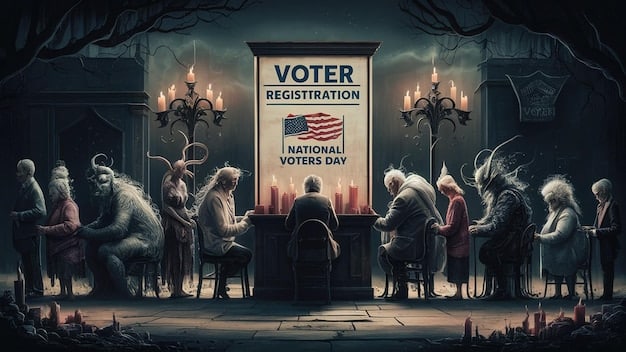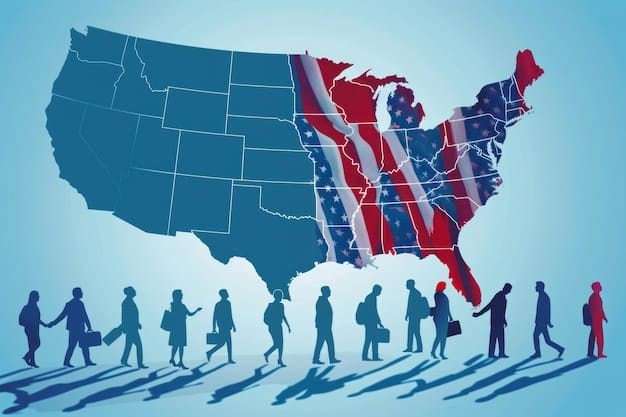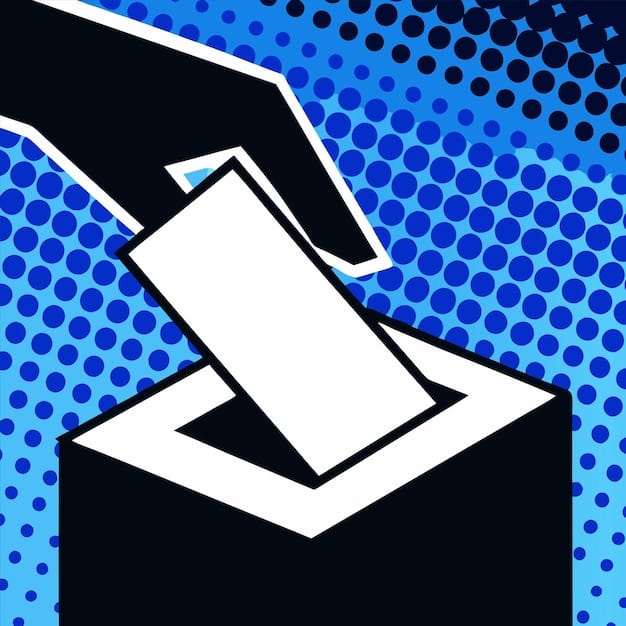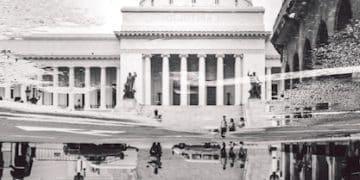Understanding the Electoral College: How It Works and the Debate Behind It

How Does the Electoral College Work, and What are the Arguments for and Against It? The Electoral College is a process, not a place, established by the U.S. Constitution for electing the president and vice president. Instead of directly voting for a candidate, citizens vote for a slate of electors who then cast the actual votes for president. This system has sparked ongoing debate, with arguments focusing on fairness, representation, and its impact on the democratic process.
The American presidential election system is unique, and at the heart of it lies the Electoral College. But how does the Electoral College work, and what are the arguments for and against it? This process, enshrined in the U.S. Constitution, has been a source of debate and controversy for over two centuries.
Understanding how does the Electoral College work, and what are the arguments for and against it, is crucial for any engaged citizen. While some champion it as a protector of smaller states, others denounce it as an antiquated system that undermines the popular vote. Let’s delve into the intricacies of this institution and explore the diverse perspectives surrounding it.
How Does the Electoral College Work, and What is Its Purpose?
The Electoral College is a system established by the U.S. Constitution for electing the president and vice president. It’s not a physical place where electors gather, but rather a process involving the selection of electors, the popular vote in each state, and the subsequent electoral vote.
The Basics of Electoral College
Each state is allocated a number of electors equal to its total number of representatives in Congress (House + Senate). The District of Columbia also gets electors, as if it were a state, even though it has no representation in Congress.
- State Allocation: The number of electors each state receives is based on its population, ensuring representation proportional to its size.
- Popular Vote: Citizens vote in their respective states, and in most states, the candidate who wins the popular vote receives all of that state’s electoral votes. This is known as the “winner-take-all” system.
- Electoral Vote: The electors then cast their votes for president. In almost all cases, they vote for the candidate who won the popular vote in their state.
To win the presidency, a candidate must secure a majority of the electoral votes, which is currently 270 out of 538.

Why Was the Electoral College Created?
The Electoral College was created during the Constitutional Convention of 1787 as a compromise between electing the president by popular vote and electing the president by a vote in Congress. There were several reasons for this decision:
- Mistrust of Direct Democracy: Some of the Founding Fathers feared that direct democracy would lead to the election of unqualified or demagogic leaders.
- Balancing Power: The Electoral College was intended to balance the power between the more populous states and the less populous states.
- Compromise on Slavery: The Electoral College also addressed the issue of slavery, as it allowed Southern states to count enslaved people as three-fifths of a person for the purposes of representation in Congress, thus increasing their electoral votes.
In summary, the Electoral College emerged from a complex web of political considerations and historical circumstances, aiming to strike a balance between different interests and concerns.
Arguments in Favor of the Electoral College
While often criticized, the Electoral College has its supporters who argue that it serves important functions and protects the interests of certain groups. Let’s examine some of the key arguments in favor of this system.
Protecting Smaller States
One of the main arguments is that the Electoral College protects the interests of smaller states. Without it, presidential candidates would likely focus their campaigns solely on the most populous states, ignoring the needs and concerns of those with smaller populations.
By giving each state a minimum number of electoral votes (equal to its two senators plus at least one representative), the Electoral College ensures that smaller states have a voice in the election. This prevents a situation where a few large states could determine the outcome of the election without regard for the rest of the country.
Promoting National Unity
Proponents argue that the Electoral College promotes national unity by requiring candidates to build broad coalitions across different regions and demographics. To win the presidency, a candidate must appeal to voters in a variety of states, not just a few urban centers.
This encourages candidates to address a wide range of issues and to consider the diverse interests of the American people. It also helps to prevent the election of a president who is solely supported by one region or demographic group, which could lead to political division and instability. This is a key element in how does the Electoral College work, and what are the arguments for and against it.
Ensuring a Clear Winner
Another argument is that the Electoral College helps to ensure a clear winner in the election. Because a candidate must win a majority of the electoral votes to become president, there is less chance of a contested election or a prolonged recount.
In a close election, the Electoral College can provide a decisive result, even if the popular vote is very close. This can help to prevent political uncertainty and instability, and to ensure a smooth transition of power. It also prevents the need for a national recount, which would be costly and time-consuming.
Arguments Against the Electoral College
Despite the arguments in its favor, the Electoral College faces significant criticism. Many believe it is an undemocratic system that distorts the will of the people and disenfranchises voters.

Undermining the Popular Vote
The most common argument against the Electoral College is that it can undermine the popular vote. On several occasions in U.S. history, the candidate who won the popular vote did not win the presidency because they did not secure enough electoral votes. This raises questions about the legitimacy and fairness of the election.
Examples include the 2000 election, when George W. Bush won the presidency despite Al Gore receiving more popular votes, and the 2016 election, when Donald Trump won the presidency despite Hillary Clinton receiving more popular votes. These outcomes have fueled calls for the abolition or reform of the Electoral College.
Disenfranchising Voters
Critics also argue that the Electoral College disenfranchises voters, particularly in states where the outcome of the election is predictable. Because of the winner-take-all system, the votes of those who support the losing candidate in a state effectively do not count.
This can lead to apathy and disengagement among voters, as they may feel that their votes do not matter. It also means that presidential candidates tend to focus their attention and resources on a small number of swing states, ignoring the needs and concerns of voters in other states.
Promoting Inequality
Another criticism is that the Electoral College promotes inequality by giving voters in smaller states more weight than voters in larger states. Because each state has a minimum number of electoral votes, regardless of its population, voters in smaller states have a disproportionate influence on the election.
This means that a vote in Wyoming, for example, is worth more than a vote in California. This disparity has been criticized as unfair and undemocratic, as it violates the principle of one person, one vote.
Potential Reforms to the Electoral College
Given the ongoing debate about the Electoral College, there have been various proposals for reform. These range from abolishing the system altogether to modifying its operation in various ways.
National Popular Vote Interstate Compact
One proposed reform is the National Popular Vote Interstate Compact. This is an agreement among states to award their electoral votes to the candidate who wins the national popular vote. The compact would go into effect when states with a majority of the electoral votes (270) join the agreement.
Proponents argue that this would ensure that the candidate who wins the popular vote also wins the presidency, while still preserving the Electoral College system. However, critics argue that it could lead to legal challenges and political instability.
Proportional Allocation of Electors
Another proposal is to allocate electors proportionally based on the popular vote in each state. Under this system, each candidate would receive a share of the state’s electoral votes equal to their share of the popular vote.
This would more closely align the electoral vote with the popular vote, and would give voters in all states a greater sense that their votes matter. However, it could also lead to more complicated election results and potentially increase the likelihood of a contested election.
Abolishing the Electoral College
The most radical reform would be to abolish the Electoral College altogether and replace it with a national popular vote. This would require a constitutional amendment, which would be a difficult and lengthy process.
Supporters argue that this would be the most democratic system, as it would ensure that the candidate with the most votes wins the presidency. However, opponents argue that it would undermine the power of smaller states and lead to the election of presidents who are solely supported by a few large urban centers.
The Future of the Electoral College
The debate over the Electoral College is likely to continue for the foreseeable future. Changing it would require significant political will and overcoming deeply entrenched interests.
The Role of Public Opinion
Public opinion on the Electoral College is divided, with Democrats generally favoring its abolition and Republicans generally supporting its preservation. However, there is also a significant amount of ambivalence and uncertainty among voters of both parties.
Ultimately, the future of this system will depend on the choices made by voters, politicians, and judges. It’s essential to continue engaging in informed debate and to consider the diverse perspectives on this important issue. Only through such a conversation can we hope to find a solution that is fair, democratic, and sustainable.
| Key Point | Brief Description |
|---|---|
| 🗳️ Electoral College | System for electing the President, not a direct popular vote. |
| ⚖️ Small State Protection | Ensures less populous states have a voice in presidential elections. |
| 🇺🇸 National Unity | Candidates must build broad coalitions across different regions. |
| 🚫 Undermines Popular Vote | Winner of popular vote can lose the presidential election. |
Frequently Asked Questions
The Electoral College was created as a compromise between a popular vote election and a congressional election of the president. It also addressed concerns about the power of more populous states.
Each state receives a number of electoral votes equal to its total number of representatives in Congress (House + Senate). The District of Columbia also receives electors.
If no candidate receives a majority of the electoral votes, the House of Representatives elects the president from the top three candidates. Each state gets one vote in this scenario.
The National Popular Vote Interstate Compact is an agreement among states to award their electoral votes to the candidate who wins the national popular vote. It goes into effect when participating states control 270 electoral votes.
Arguments for the Electoral College include protecting smaller states and promoting national unity. Arguments against include undermining the popular vote and disenfranchising voters in non-swing states.
Conclusion
In conclusion, how does the Electoral College work, and what are the arguments for and against it, is a complex question with deep historical and political roots. While it has its defenders who argue for its importance in protecting smaller states and promoting national unity, it also faces strong criticism for undermining the popular vote and creating inequalities.
The debate over the Electoral College is likely to continue. Understanding the nuances of this system is crucial for informed civic engagement and shaping the future of American democracy.





